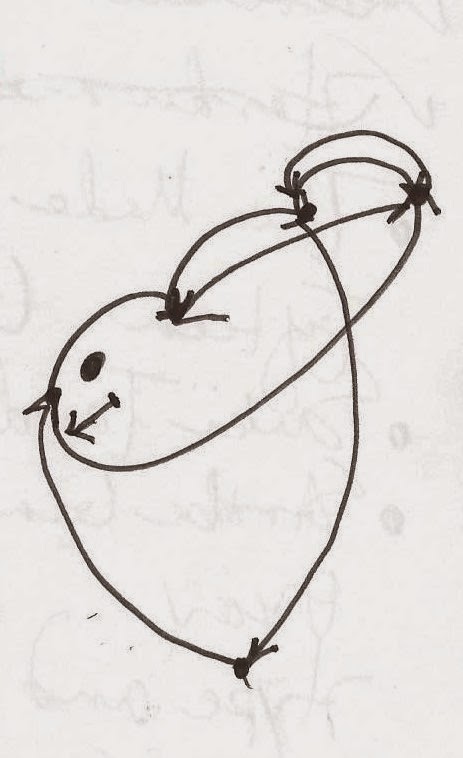Discover: Science, Technology, and the Future, November 2007, p. 32-33.
by Frank Vertosick
"[...]The emergency room had just admitted a 22-year-old convenience store clerk, whom I will call Rachel. She had awakened several hours earlier with a rather annoying problem: She could not move her legs. [...]'Does anything hurt?' I asked. 'No,' she said, shrugging. [...] 'Are they numb?' I continued, stroking her bare shins with my index finger. 'Nah, I feel that. They just feel funny, you know, heavy. Do you think this is serious? When can I go home? I have to open the store at 6. [...]'
"Further interrogation revealed little. Rachel was healthy, no illnesses, no medications, no surgeries. A smoker since 14, she used marijuana sporadically, but there was no other history of drug use. No traumas, no chance of pregnancy (her boyfriend had abruptly dumped her six months earlier, and she still seethed when discussing him), no history of depression or other mental illness, no significant family history. She was in good health. Except for the 'leg thing.'
"In addition to lacking any obvious pathology, she also lacked health insurance. The ER had already set up an MRI of her entire spine and summoned the technician from home to do it. This might yield an answer -- but I suspected the truth about her condition already, and I was reluctant to saddle the woman with thousands of dollars of expensive pictures. The tests would all be negative anyway.
"A quick examination confirmed my suspicions. When I poked her foot with a pin, she yelped but didn't move her legs. [...]These findings, coupled with a blase attitude toward her paralysis (a mental state known in neurology as "la belle indifference"), made me suspect a rather distasteful diagnosis: hysteria.
"[...]Today hysteria is known by the more palatable but still inaccurate moniker 'conversion disorder.' It manifests acutely in the form of blindness, paralysis, even coma, with no apparent organic disease. Sigmund Freud believed that the hysterical mind converts some psychic trauma into a physical malady that will both garner sympathy and allow the sufferer to hide from her problems behind a shield of illness. Decades before Freud, the great French neurologist Jean-Martin Charcot suggested that hysteria was indeed an organic brain illness, not the product of a disturbed or demon-possessed mind, but Freud's explanation gained wider acceptance.
"Although many hysterics complain of mental distress (like Rachel's boyfriend woes), recent neurophysiological evidence from PET scans and functional MRIs suggests that the malady may be akin to a seizure initiated by the frontal lobes, and so is a condition of the brain as well as the mind. Some people may have a vulnerability to this kind of response to stress. Thus Charcot was probably right (he usually was), and Freud was probably wrong (no surprise there either).
"[...] I told [Rachel] that most likely nothing serious was going on and that she probably had a 'vitamin deficiency.' This is one aspect of hysterical paralysis that still smacks of a psychiatric origin: Patients must be convinced that they are being treated as if they have an organic disease. Simply telling them they are imagining things doesn't work very well.
"There is an old adage: Neurology is what you do while you are waiting for the films to be developed. [...]
"Twenty minutes after the [vitamin] infusion ended, Rachel's legs roared to life, and she walked out the door. I went home, tired but happy in the knowledge that I hadn't allowed a single freakish spasm of a young woman's brain to land her in the poorhouse or in the psychiatric ward."
Saturday, October 06, 2007
Subscribe to:
Post Comments (Atom)













No comments:
Post a Comment